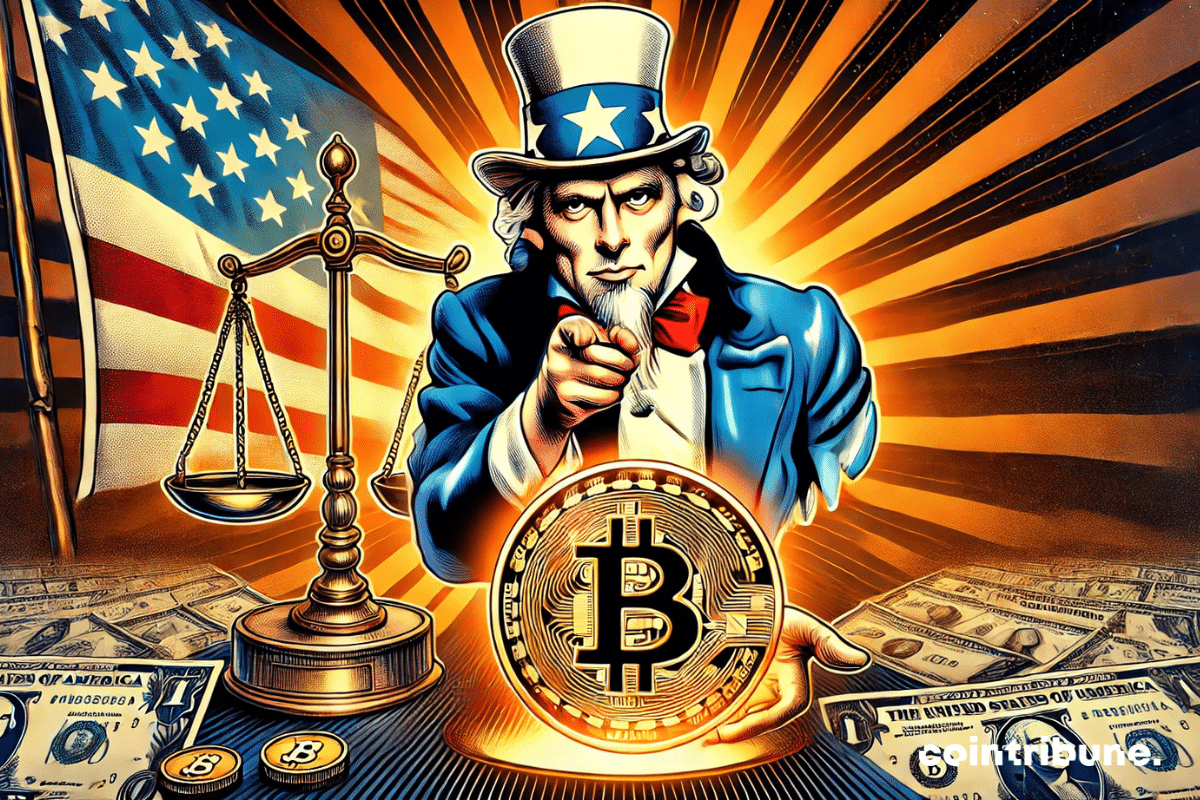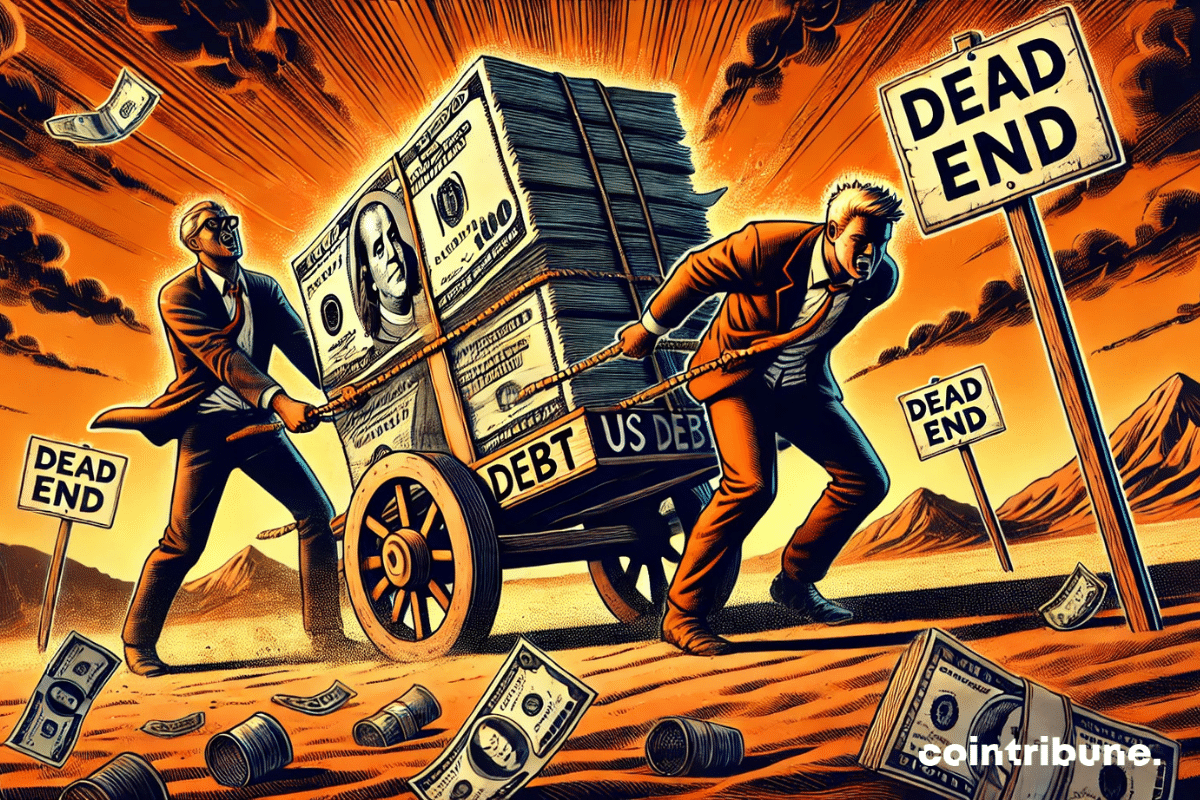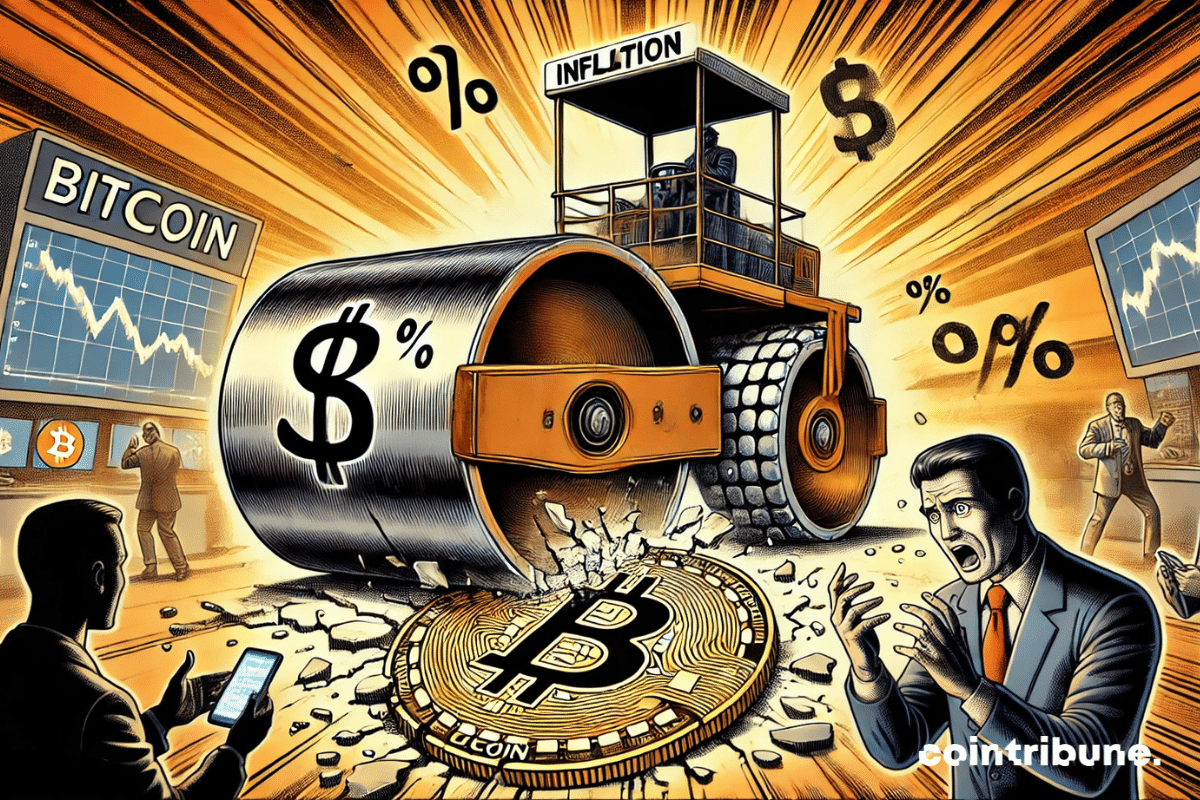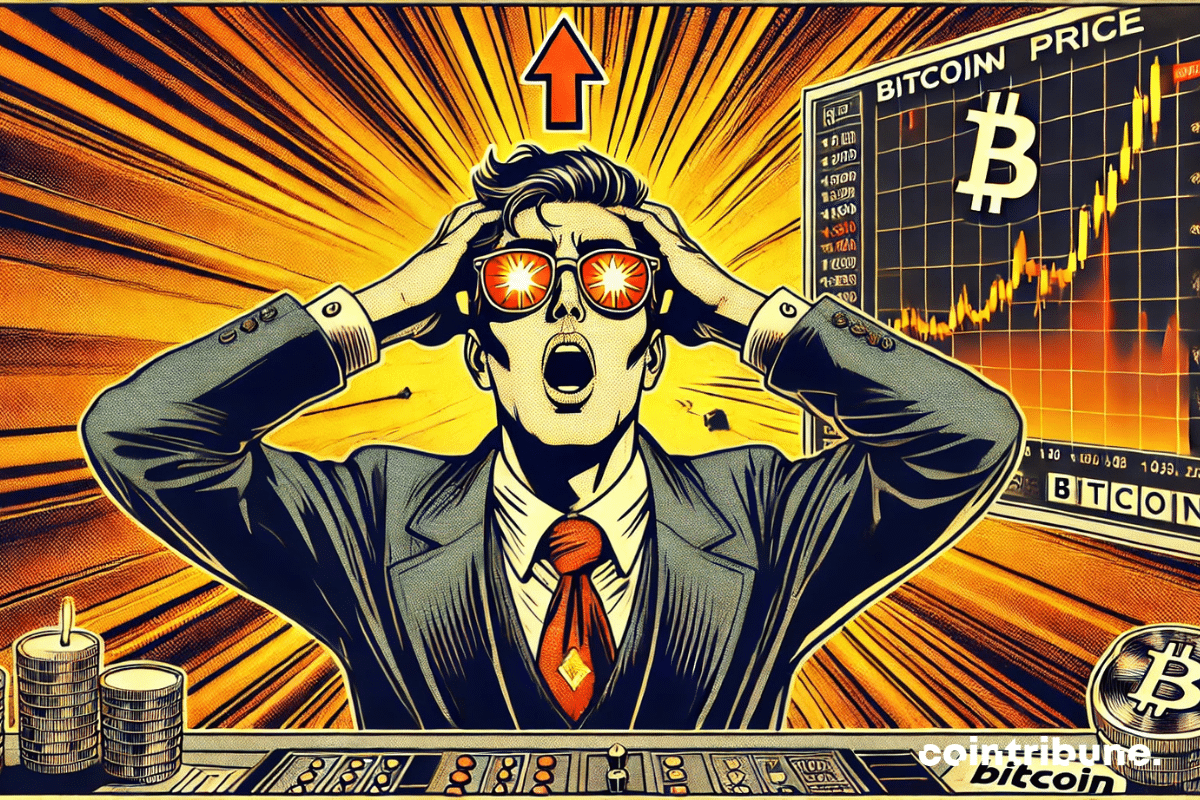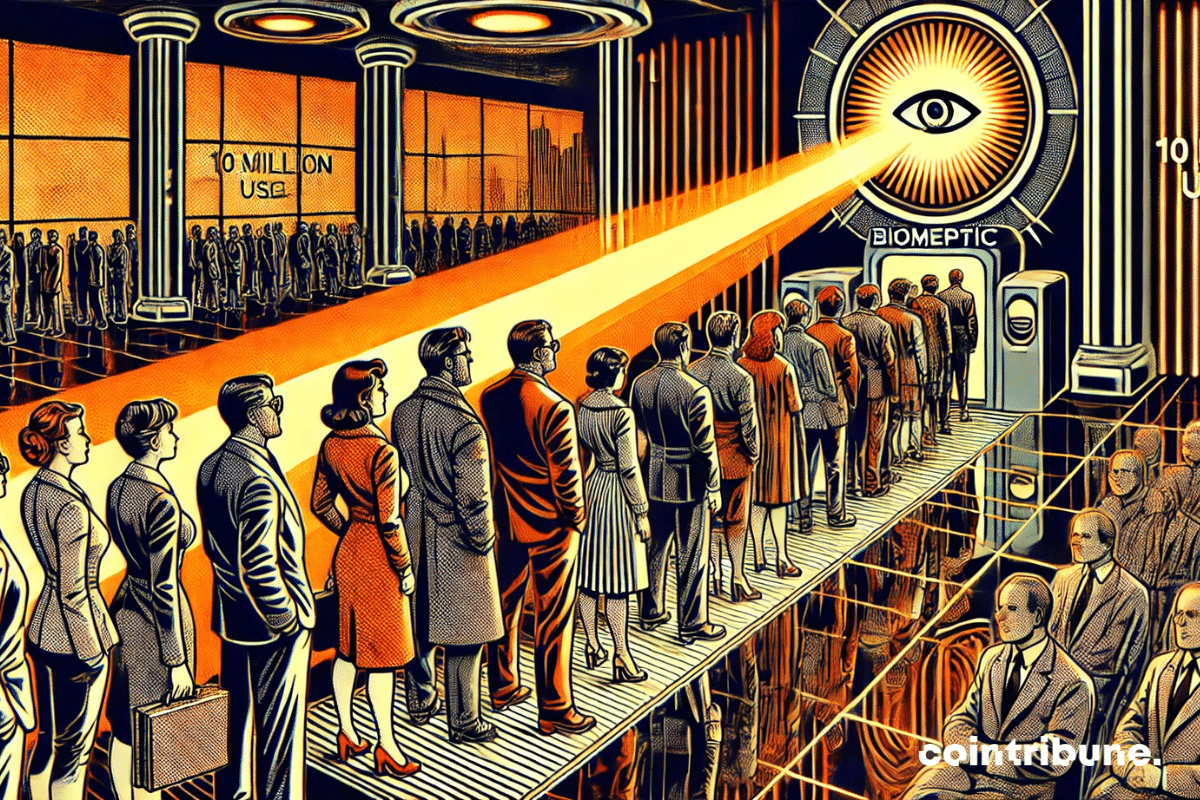In a world where energy shapes geopolitical power dynamics, the crisis plaguing Gazprom reveals the fractures of a once-unshakeable giant. A pillar of the Russian economy and a strategic instrument of the Kremlin, the company is facing a brutal decline in its revenues, exacerbated by the loss of its European markets and international sanctions. Now forced to cut its workforce in a historic manner, Gazprom finds itself at a decisive stage, where its strategic choices will determine not only its future but also that of the Russian economy.
Home » Archives for Luc Jose Adjinacou » Page 37
Luc Jose A.
Diplômé de Sciences Po Toulouse et titulaire d'une certification consultant blockchain délivrée par Alyra, j'ai rejoint l'aventure Cointribune en 2019. Convaincu du potentiel de la blockchain pour transformer de nombreux secteurs de l'économie, j'ai pris l'engagement de sensibiliser et d'informer le grand public sur cet écosystème en constante évolution. Mon objectif est de permettre à chacun de mieux comprendre la blockchain et de saisir les opportunités qu'elle offre. Je m'efforce chaque jour de fournir une analyse objective de l'actualité, de décrypter les tendances du marché, de relayer les dernières innovations technologiques et de mettre en perspective les enjeux économiques et sociétaux de cette révolution en marche.
The BRICS project to create a common currency is generating growing interest among economists and analysts, as it could redefine global financial balances. For decades, the US dollar has dominated as the main reserve currency, giving the United States substantial economic and geopolitical power. During their summit in 2024 in Kazan, Russia, the leaders of the BRICS intensified their discussions on establishing an alternative called "Unit," designed to facilitate exchanges within the bloc. This project fits into a broader strategy aimed at reducing their dependence on the dollar, in the context of increasing geopolitical tensions and economic sanctions. At a time when many countries are seeking to diversify their reserves and bypass the constraints imposed by the current monetary system, can this initiative truly shake the dollar's supremacy?
The French rental market is going through an exceptionally severe crisis, threatening access to housing for many households. Despite a slight recovery in the real estate sector, rentals remain under intense pressure, with a plummeting supply and prices that continue to rise. According to the National Federation of Real Estate (Fnaim), structural problems and poorly adjusted regulatory choices are exacerbating this situation. With the rise of short-term rental platforms and new constraints related to energy renovation, challenges are piling up, highlighting the urgency to act. This crisis, beyond the numbers, involves major social and economic issues for both tenants and investors.
The crypto market is experiencing unprecedented excitement. Indeed, Bitcoin, the undisputed leader of the sector, is nearing the symbolic threshold of 100,000 dollars, a level that signifies much more than just a simple increase in value. This ascent reflects the evolution of the global economy, where cryptocurrencies hold an important place in the portfolios of investors seeking alternative assets. Boosted by favorable U.S. economic data, notably an apparent control of inflation, this progression provides insights into the opportunities and challenges of a constantly shifting market, amid optimism and uncertainties related to fluctuations in traditional markets.
The United States is facing a historic budget deficit, reaching $711 billion in just three months, an increase of 39% compared to the previous year. This explosion in public spending, coupled with a decline in tax revenues, is straining federal finances. Donald Trump, poised to return to the White House, will have to reconcile his promises of tax cuts with the necessity of controlling the debt. To assist him, Elon Musk has been appointed to lead a commission dedicated to government efficiency. His ambition: to reduce federal spending by $2 trillion, even if a halfway goal would already be a "super result." Between budgetary discipline and economic imperatives, the future administration finds itself faced with a perilous equation, where each decision could redefine the country's financial stability.
After reaching a historic peak in December, Bitcoin is undergoing a brutal correction, losing nearly 10% of its value in just a few weeks. This drop cannot be solely explained by a simple market cycle, but by a tense economic context. Persistently high U.S. inflation reduces the Federal Reserve's (Fed) maneuvering room, delaying hopes for rate cuts. This situation increases the pressure on risky assets, including Bitcoin, which sees its appeal diminish against a rising dollar and increasing bond yields. The imminent announcement of the Consumer Price Index (CPI) on January 15 could further accentuate this trend. According to Steno Research, inflation exceeding expectations could trigger new liquidations, potentially pushing BTC below $85,000. However, the danger does not come solely from macroeconomic data. The Bitcoin derivatives market remains overheated, fueling an excess of leverage that increases volatility. Amid economic uncertainties and the fragility of speculative positions, crypto operates in a zone of instability where each economic announcement could provoke a significant movement.
The year 2025 marks a decisive step for the crypto market. Indeed, regulatory pressure is intensifying, while institutions are strengthening their presence in the sector. In this rapidly changing environment, some projects manage to stand out by combining innovation with strategic adoption. For investors, identifying the most promising altcoins relies on several criteria: scalability, institutional adoption, technological performance, and return potential. Thus, among the most strategic choices for January 2025, Solana (SOL), Cardano (ADA), and Avalanche (AVAX) stand out due to their optimized infrastructures and growing adoption, thereby consolidating their place at the heart of Web3.
Cryptos have been evolving for years in a regulatory gray area, but the latest decision by the U.S. Supreme Court marks a decisive turning point for Binance. By rejecting the platform's request, the highest American court confirms that securities laws apply to transactions conducted on its servers, even if the company does not have a physical headquarters in the United States. This verdict paves the way for a class action lawsuit initiated by investors, who accuse Binance of selling unregistered cryptos. Already under pressure after a series of lawsuits and a multi-billion dollar settlement with the Department of Justice, the exchange and its former CEO, Changpeng Zhao, are facing intensified legal challenges. This setback raises a key question: Are the United States imposing their authority over the entire global crypto market?
Global economic relations are evolving under the influence of geopolitical tensions and the strategic repositioning of major powers. In this context, China and Russia are strengthening their trade partnership, which is set to reach a historical record of 240 billion euros in 2024. This growth illustrates a strategic rapprochement bolstered by Western sanctions against Moscow and Beijing's desire to expand its influence. More than just an economic alliance, this cooperation sends a clear signal to the United States and the European Union, which aim to limit their dominance on the global stage. Thus, the surge in trade flows, increased use of the yuan in transactions, and the restructuring of international financial circuits now raise the question of the long-term consequences of this Sino-Russian agreement.
The movements of Bitcoin rhythm the markets, between phases of euphoria and brutal corrections. After a record of 108,268 dollars in December 2024, the crypto is undergoing a period of consolidation. However, a major technical indicator, the 52-week Simple Moving Average (SMA), fuels speculation. According to analyst Dave the Wave, Bitcoin could reach a new peak by July 2025, a pattern already observed during previous bullish cycles. Thus, if this prediction is validated, it would mark a key milestone in the current cycle. Nevertheless, the market's evolution remains uncertain, between technical signals and external factors likely to influence price trajectories.
The global economic landscape, long dominated by Western powers and supported by the preeminence of the dollar, seems on the brink of change. In the face of a financial system centralized around the United States and Europe, many nations are expressing a growing desire to turn to alternatives. This trend is accelerating with the recent announcement: more than twenty countries from several continents have officially submitted their candidacy to join BRICS in 2025. If this project comes to fruition, the expansion of the formed bloc could enhance its economic weight but also redefine the balance of power on a global scale.
Amid revolutionary announcements, technological advancements, and regulatory turbulence, the crypto ecosystem continues to prove that it is both a territory of limitless innovations and a battleground for regulatory and economic conflicts. Here is a summary of the most significant news from the past week concerning Bitcoin, Ethereum, Binance, Solana, and Ripple.
Investor appetite for altcoins continues to grow, as evidenced by the spectacular increase in their trading volume on Binance, which now accounts for 78% of the platform's activity. This record level raises questions: is the market on the verge of a new bull run for altcoins? According to Burakkesmeci, an analyst at CryptoQuant, this development is a strong signal that reinforces the hypothesis of a bullish market in 2025. However, despite this enthusiasm, some indicators remain mixed. Bitcoin still dominates the market with 57.74% of the total market capitalization, and the Altcoin Season Index, down to 46 out of 100, does not yet confirm a significant shift towards altcoins. In the face of these contradictory signals, the current dynamics reflect more of a gradual rise in power than a real immediate cycle change.
Artificial intelligence is progressing at a rapid pace, making the distinction between humans and machines increasingly difficult. In response to this evolution, Worldcoin, now rebranded as World, aims to establish a universal proof of humanity through a biometric identification system based on iris recognition. The company has just announced that it has surpassed the milestone of 10 million verified users, a benchmark that signifies its massive adoption and fuels growing controversy. Indeed, the project relies on a network of orbs tasked with scanning the users' ocular data to assign them an unforgeable digital identity. According to its creators, this technology would secure digital interactions and ensure that only genuine humans access online services. Nevertheless, several governments and data protection authorities are concerned about the potential pitfalls of this model. Between technological promise and regulatory resistance, Worldcoin is part of a debate on digital identity and personal data governance. Its success or failure could shape the future of online authentication in a world where AI challenges the foundations of digital trust.
The crypto market evolves with the fluctuations, swinging between bursts of enthusiasm and periods of doubt. However, some assets manage to maintain their appeal despite the prevailing volatility. XRP perfectly illustrates this resilience, showing a clear resurgence in activity following a phase of uncertainty. Over 2 million transactions were recorded in a single day, a level rarely reached in recent months. This explosion in transaction volume goes beyond a mere usage indicator. It reflects a strengthening of the network, confirming renewed interest from investors and market players. At the same time, the price of XRP has stabilized above the key supports of $2.30 and $2.20, indicating bullish potential. If this momentum continues, XRP could regain a central place in the crypto transaction landscape and strengthen its long-term adoption.



